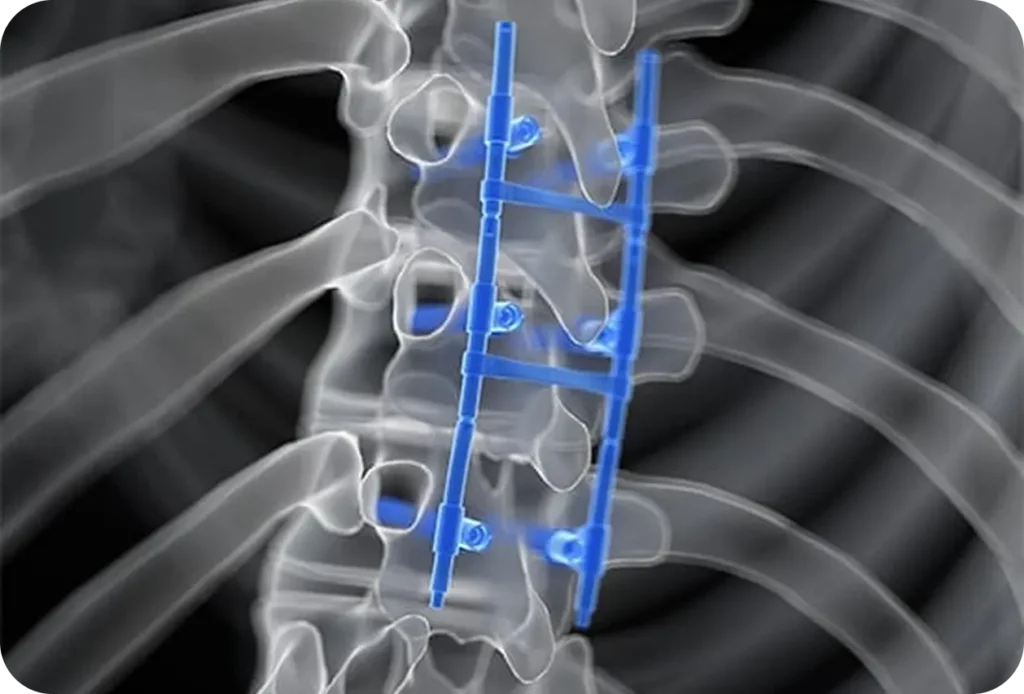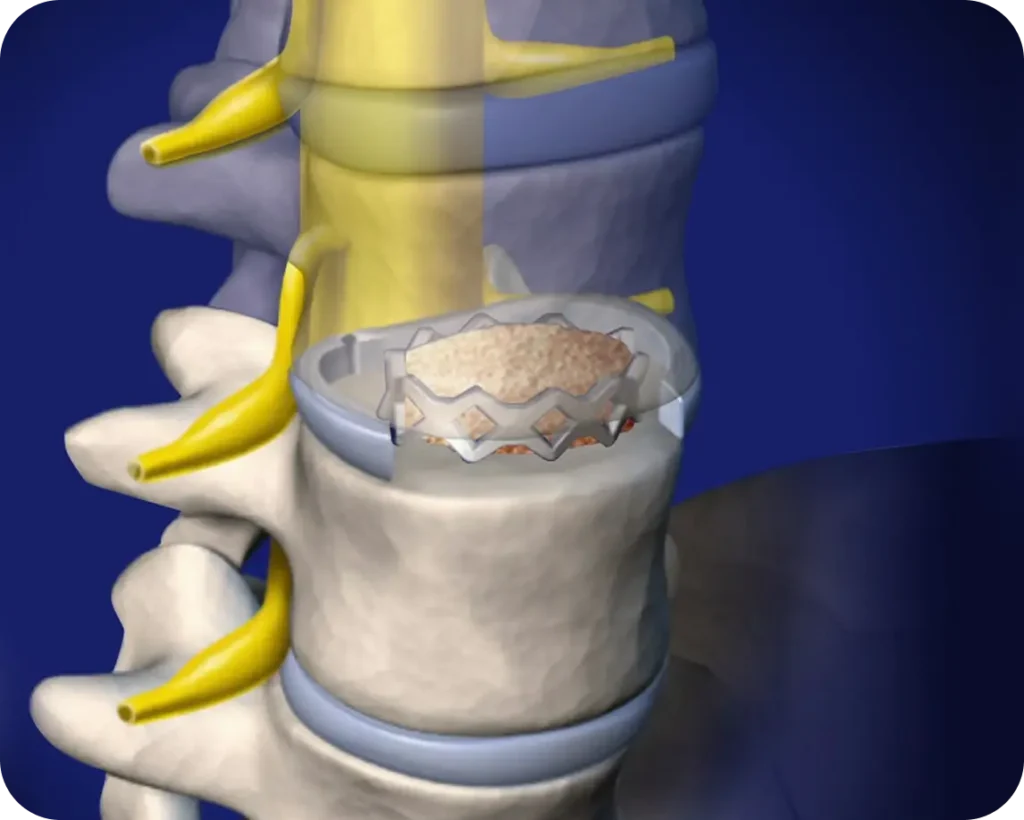Fusion stops painful motion and restores alignment when slip, deformity, or recurrent instability causes symptoms. We match the surgical approach to your anatomy, prior surgeries, and personal goals—with a clear plan for rehab and return to work.
If compression exists without instability, consider Lumbar Laminectomy / Decompression.


PLIF (Posterior Lumbar Interbody Fusion):
Posterior approach, reliable stabilization
TLIF (Transforaminal Lumbar Interbody Fusion):
Angled posterior approach, less nerve retraction
XLIF (Extreme Lateral Interbody Fusion):
Lateral approach, minimally invasive with faster initial recovery
All aim to:
We explain the pros, cons, nerve handling, and recovery of each approach in plain language.
See how lumbar fusion differs from cervical fusion in Spinal Fusion Overview.
Request Your Same-Day Lumbar Fusion Evaluation
Don’t wait in pain — our expert spine specialists are available for same-day evaluations.
Lumbar Fusion is recommended when instability, deformity, or recurrent slippage causes ongoing pain or nerve compression. It’s often used for spondylolisthesis or failed prior decompressions. When compression exists without instability, a Lumbar Laminectomy / Decompression may be sufficient. Each plan is tailored to your anatomy, goals, and recovery timeline.
These Lumbar Fusion techniques differ mainly by surgical access. PLIF and TLIF are posterior approaches, while XLIF is done from the side. All restore stability, decompress nerves, and realign the spine. Your surgeon selects the safest path for your anatomy. To understand overall fusion strategy, see Spinal Fusion Overview for comparison and recovery expectations.
A stand-alone Lumbar Laminectomy / Decompression may be enough when there’s no instability. Fusion becomes necessary when vertebral slip, deformity, or recurrent stenosis causes structural problems. If imaging and symptoms don’t align, a Diagnostic Nerve Block can help confirm the pain generator before committing to surgery.
Most patients start walking the day after surgery and return to desk work in 2–4 weeks. Heavy labor or athletics require more healing time. Structured Physical Therapy & Rehab builds strength and mobility, while a Bone Density (DEXA) Review ensures bone quality supports fusion success.
Yes. Lumbar Fusion relieves nerve compression and stabilizes abnormal motion that causes leg pain (sciatica) and chronic low back pain. It’s particularly effective for instability-driven conditions. Complementary rehabilitation through Physical Therapy & Rehab helps restore posture, balance, and endurance, improving daily function and long-term quality of life.
Desk-based professionals often return within 2–4 weeks, while heavy labor or contact sports may take several months. Progress depends on bone healing and muscle recovery. Ongoing Physical Therapy & Rehab and good bone health, monitored through Bone Density (DEXA) Review, help ensure a strong, durable fusion and safe return to activity.
Contact us and set up your doctor visit today to start your journey to pain-free living